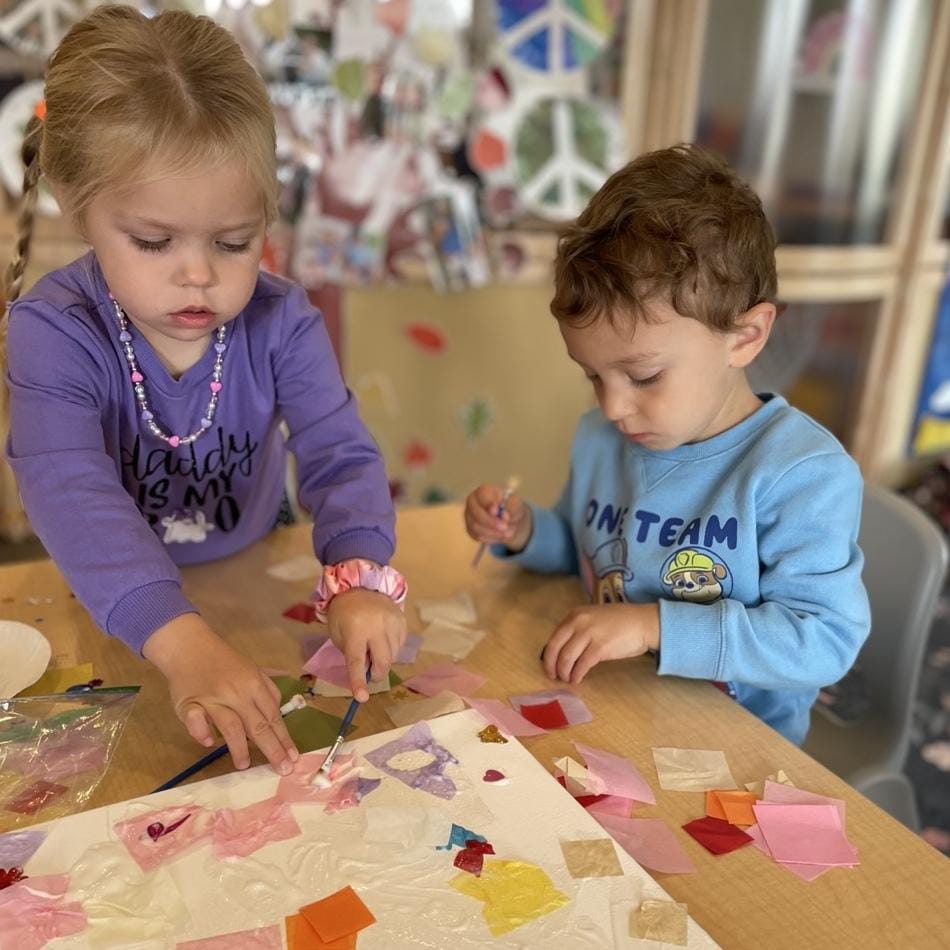
Messy play—whether it’s finger-painting, playing in the mud, or mixing ingredients in the kitchen—is often seen as a fun, carefree activity. But behind the splashes of paint and flour-covered hands, messy play offers significant developmental benefits for young children. Far from being just a chance to get dirty, messy play is an essential part of early childhood growth, fostering creativity, problem-solving skills, sensory development, and emotional resilience.
Here are some of the key benefits of messy play for young children:
1. Sensory Development
Young children experience the world primarily through their senses. Messy play engages a variety of sensory experiences, from the feel of gooey slime or wet paint to the smell of spices or the sounds of squelching mud. These activities stimulate the brain and help develop sensory processing skills, which are critical for language development, motor coordination, and emotional regulation.
For example, when a child plays with water, they not only learn about temperature, texture, and weight, but they also build neural connections that will later support their ability to understand abstract concepts like cause and effect.
2. Fine and Gross Motor Skills
Messy play often involves actions that develop both fine and gross motor skills. When children squish playdough, pick up and drop objects, or roll and pat out shapes, they are refining their hand-eye coordination and strengthening the small muscles in their hands and fingers. Activities like pouring, scooping, and stirring, often found in sensory bins or in the kitchen, help to improve hand strength and dexterity, laying the groundwork for later skills like writing, drawing, and dressing themselves.
In addition to fine motor development, messy play can also support gross motor skills. For instance, activities like jumping in puddles or rolling in the grass require balance, body awareness, and coordination.
3. Creativity and Imagination
Messy play invites children to use their imaginations. Whether they’re creating abstract paintings with their fingers, building structures out of mud, or pretending the flour is snow, they are free to explore ideas and experiment with different forms of expression.
This open-ended type of play encourages problem-solving as children make decisions about how to approach tasks and overcome challenges. As they interact with materials in a less structured way, their creativity is given space to flourish. This type of free play helps children to develop a sense of ownership over their ideas and fosters independent thinking.
4. Emotional Development and Resilience
Getting messy can be a powerful way for children to build emotional resilience. Messy play often involves trial and error, and it’s not unusual for things to get out of control—paint spills, dough gets everywhere, or a tower topples over. These experiences offer valuable lessons in coping with frustration, problem-solving, and learning from mistakes.
By allowing children to experience and manage their own messes, we give them opportunities to develop emotional control and self-confidence. They learn that it’s okay to make mistakes and that these “messes” can lead to new solutions and discoveries.
5. Boosting Social Skills and Cooperation
Messy play can also foster social interactions, especially when done in a group. When children play together in a messy, shared space, they learn to cooperate, take turns, share materials, and negotiate ideas. Whether they are building a sandcastle together, making a collaborative painting, or simply passing objects back and forth, children learn key social skills like empathy, patience, and conflict resolution.
6. Building Executive Functioning Skills
Messy play helps develop executive functioning skills—those cognitive processes that enable children to plan, focus, remember instructions, and manage multiple tasks. For example, when a child is making a mud pie, they need to remember where the materials are, plan out how they want to combine them, and then follow through with the steps needed to create their masterpiece. These skills are foundational for school readiness and future academic success.
7. Stress Relief and Mindfulness
In today’s fast-paced world, children are often under stress from school, family pressures, or even just the demands of everyday life. Messy play provides a calming, meditative outlet for self-regulation. The act of creating, experimenting, and getting immersed in the sensory experience can help children focus their minds and relieve tension.
It’s also a form of mindfulness—helping children to stay in the present moment and focus on the tactile experience at hand. This mindfulness aspect of messy play can help children develop emotional regulation skills, which are crucial for managing anxiety and stress.
8. Promoting a Growth Mindset
When children engage in messy play, they learn the value of effort over perfection. Messy play encourages children to embrace the process rather than focus solely on the end result. This fosters a growth mindset, where children learn that success comes from trying, experimenting, and practicing.
By letting children explore and create without worrying about making a “perfect” result, messy play teaches resilience and the importance of perseverance.
9. Connection with Nature
Many messy play activities—like playing with mud, leaves, sand, or water—bring children closer to nature. Engaging with natural materials allows children to develop an appreciation for the environment and gain a deeper understanding of the world around them. It also supports the development of environmental awareness, which is crucial as they grow older.
How to Incorporate Messy Play
You don’t need to wait for the perfect setup or a specific project to engage in messy play. Some simple ways to incorporate messy play at home or in an early childhood setting include:
- Sensory bins filled with rice, pasta, water beads, or shredded paper.
- Painting with brushes, sponges, or just fingers on large sheets of paper.
- Baking and cooking together—mixing dough, spreading frosting, or kneading bread.
- Mud kitchens or outdoor water play for hours of exploration.
- Shaving foam or finger paint on trays for sensory exploration.
The key is to provide opportunities where children can explore, create, and express themselves freely without fear of making a mess.
Messy play is much more than just a way for kids to have fun—it is an important and enriching part of their development. Through sensory exploration, problem-solving, creativity, and emotional growth, messy play lays the foundation for many of the skills children need to succeed in life. So, next time your child wants to dive into a messy activity, don’t hesitate to embrace the mess—it’s all part of the learning process!
